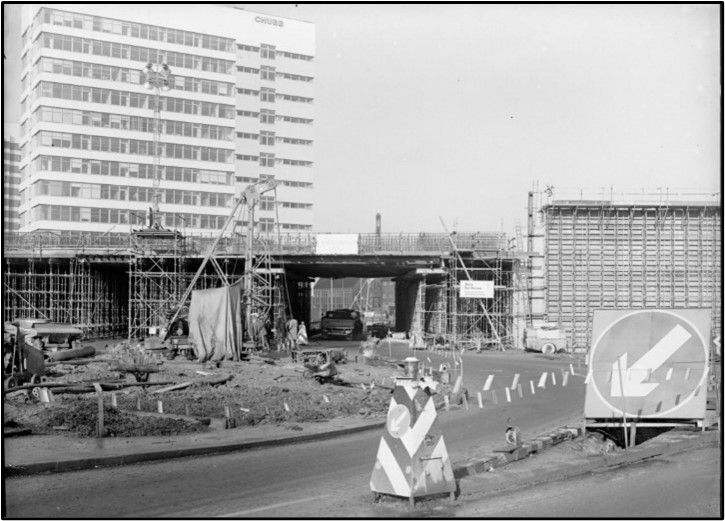By Nick Pollard
Looking at Sunbury Cross today, it’s perhaps difficult to imagine how different it looked 50-odd years ago. Then, the Jubilee Clock, erected in 1897 to commemorate the 60 years on the throne of our previous longest-reigning monarch, Queen Victoria, stood in the middle of a busy intersection of single carriageway roads. There were no traffic lights, and it was never quite clear from the road markings whether the Clock was a roundabout or not. Hence some people drove round it as you would a roundabout, and others just took the shortest route to the road they wanted!
Change was on the horizon in the 1960s though, with the coming to fruition of the long-held plan to build a major road from London to the South-West. This had its beginnings as the Great Chertsey Road (now the A316) before the Second World War but plans for that to extend further were put on hold, first by the war, and then post-war austerity.
The scheme eventually emerged as the M3 motorway from London to Basingstoke (later Southampton), and to feed into this the A316 was to be upgraded to a dual carriageway. As Sunbury was selected to be the start of the motorway, and so as not to impede access to the new road from the London direction, a huge new junction and flyover were planned to replace the existing road layout..

The first task was to enclose the Staines Reser-voirs aqueduct which ran through the area, plus numerous other water mains and other services. A temporary bridge had to be laid across the deep excavations which were necessary. This was followed by the creation of the large roundabout, which unfortunately entailed the demolition of several buildings to make way for it. The old Holland and Barrett shop at the junction of Station Road and Staines Road East, and the Volunteer Arms on the opposite corner of Station Road, were two prominent buildings lost. Beyond the Volunteer Arms and leading to the railway bridge in Green Street, a whole parade of shops came down. This part of the road was actually called Bridge Street, but as the buildings were demolished, the road name disappeared. The clock itself was dismantled, later re-emerging in the new shopping centre created alongside the new roads.

While this was happening, the buildings along the southern side of the Staines Road West had also been pulled down, and the road widened to become a dual carriageway. The shopping centre and tower blocks of flats and offices were built on the land to the south of this. This was a very significant change to the skyline of Sunbury, where buildings had only previously been a few stories high, and of course was typical of what was going on all round the country in the 1960s.

By the early 1970s, construction of the flyover to link the A316 to the new M3 was well under way. Further away from the Cross, the motor-way carved its way across the flat countryside towards the Thames crossing at Laleham, re-quiring several bridges to be built to take local roads over it. At the time, when things were quiet, it was not unknown for some local people to access the unfinished road and go for a test drive along it!

The section of the M3 from Sunbury to Lightwater opened in 1974, and the transformation of Sunbury Cross into a ma-jor transport hub was complete.
‘The History of Squire’s Garden Centres’, a talk by our President Colin Squire OBE, is the subject of the next Sunbury and Shepperton Local History Society meet-ing on Tuesday 15th March at Halliford School, Russell Road, Shepperton, starting at 8pm. All welcome, admission £2 for non-members.

